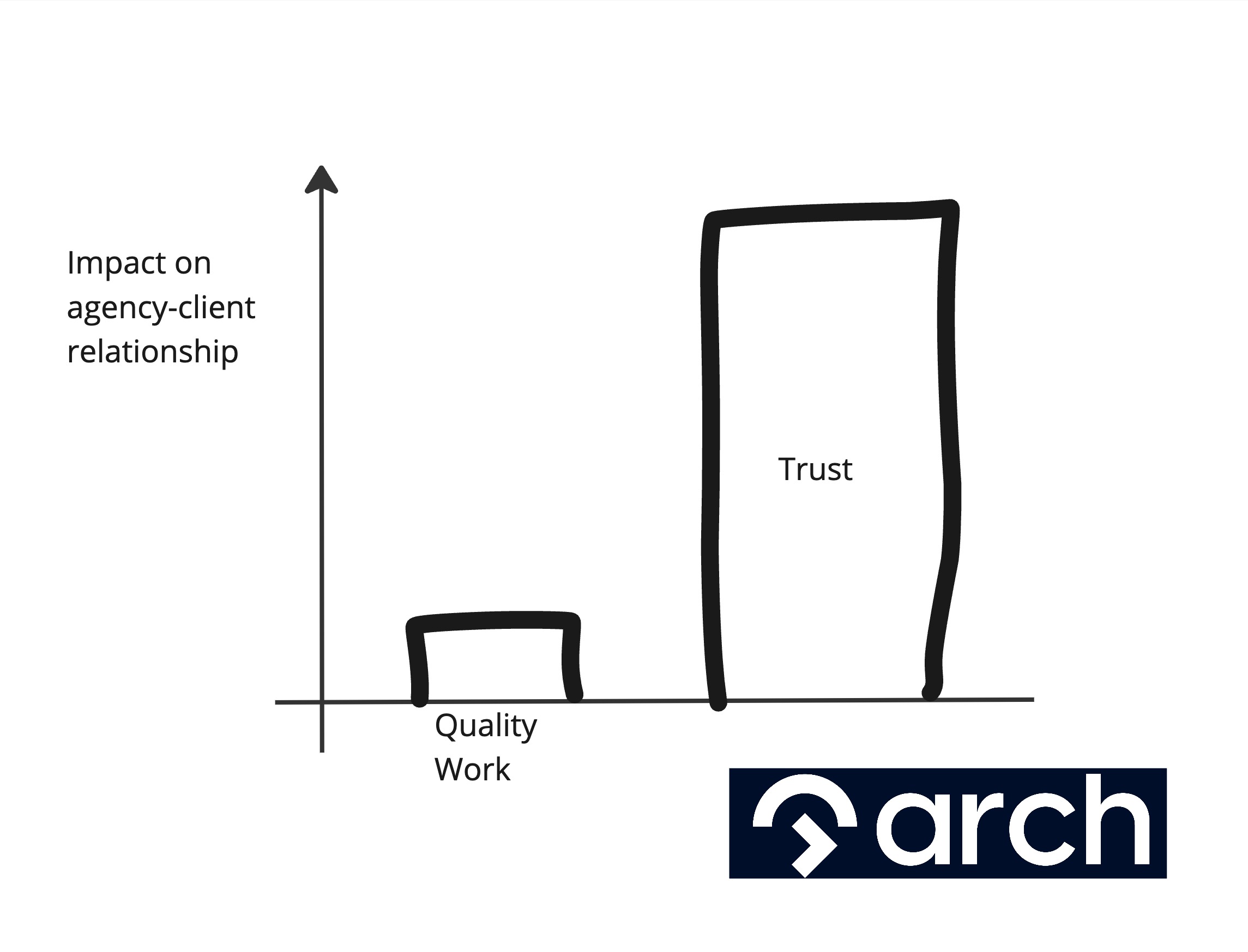Stan recently quit his full-time job as Chief Data Officer to form a data consultancy. He already did a few projects on the side and is now effectively a fractional CDO for 5 clients. He’s already hired an analyst and a data engineer to help him work those gigs.
His decade of experience is always a good selling point; he and his team get hired. The team is building data pipelines, modeling raw data into Snowflake tables, and building reports and dashboards. Sometimes Stan steps in to help consult and provide analyses based on these reports.
But 12 months into his new data consultancy business, things went south, and two clients quit for various reasons. Stan isn’t sure why; both of them claim that he doesn’t seem to add value. There were a couple of minor misunderstandings and minor incidents, but his team always worked it out.
What Went Wrong?
At first, Stan doesn’t think much of it and keeps on looking for new clients, but one day she meets an old friend: Rachel. Rachel has been in the data consulting business for 5 years already.
Over coffee, Rachel says something that makes Stan listen up: if data consulting clients quit within a couple of months, in her experience, it’s due to one of two factors:
- You’re not a match; you don’t offer what they seek.
- You broke their trust.
Once he hears that word, everything falls into place. Yes! Stan feels Rachel is on to something. The more he thinks about it, the more he realizes he’s broken the trust of his two clients, not in a big way but rather with multiple small things that just add up over time.

6 Things Data Consulting Clients Absolutely Hate
“The First Law of Service: Satisfaction equals perception minus expectation. If the client perceives service at a certain level but expected something more (or different), then he or she will be dissatisfied. ”
– David Maister, author of Managing the Professional Service Firm
Stan was sure he did quality work, but quality work, doesn’t equal quality service. And clients want quality service, not just quality work. He forgot the complete package, understanding exactly what his clients wanted, and thus broke their trust and didn’t deliver what they expected.
Here are 6 things that will break the perception of data consulting clients and how to fix it.
1. Not getting results
Sounds obvious. But the nature of the data business makes it less transparent than you think. Clients expect tangible results, and not getting them can be a deal-breaker. Fixing this is a lot more about adjusting the expectation than the perception.
One way to prevent not being able to provide results is to write proposals that are spot on. Remove all the marketing & sales material from your proposal and ensure they contain a good plan for how your client will get his results. Make sure to include what’s in scope and what is not.
A second way to prevent it is to provide your clients with options. In the data world, you’ll face two types of work clients won’t know about unless you tell them:
- Setup and maintenance of tools
- Behind the scenes, regular tasks like modeling data, creating and testing new orchestrator pipelines, and managing credentials for a BI tool.
Don’t assume your client needs everything; provide him with different packages and options to choose from inside your proposal to make sure he has the power to tell you what he might not need.
2. Not seeing results (even if they get them)
It’s not enough to achieve results if you deliver results, but your client isn’t aware you didn’t deliver results.
It is important to communicate them and make them visible. If you email your client every week detailing the results, but he doesn’t read it, it’s your fault.
Try to press for in-person communication as much as possible to fix this.
A real-world example: A great agency we worked with insisted on in-person presentations and discussion of the results every week for 30 mins. They also did a performance review every month. It was a great structure to ensure we were synced on all the results and work done.
3. Not seeing anything
Data outages, stale data, reports that update at 10 am, not 6 am in the morning, there are many ways to give a client the feeling the quality of your pipelines isn’t at the top.
As a rule of thumb, If the client has to ask whether the data is up-to-date, you’re slipping down on the trust scale.
Why don’t secrets work well in a database? Because as soon as you insert them, they start to break relationships and drop tables! (Data Quality Joke of unknown origin)
You don’t need to have uptime guarantees of 100%, and often, you’ll rely on SaaS tools that can make your life hard. But what you need is transparency, which includes good alerting and monitoring, including communication with your clients that state problems and time to fix:
“Hey John, We were alerted that a pipeline broke inside Stitch 5 minutes ago; we’re fixing it ASAP. You’ll have stale data for 20 minutes, but everything will return to normal. If you have any questions, don’t hesitate to ask.“
4. Feeling misunderstood
As David Maister used to say, the problem is rarely what the client said in the first meeting.
When expectation doesn’t mean perception, it is often because the client was misunderstood. This will always be an issue since most clients won’t be as tech or data-savvy as you.
It is essential to bring all discussions and proposals back to the key question: How are we delivering value to the client? How are we making the client’s decisions faster? What is the client going to do with these reports?
Keep those questions in mind and return to them with every performance evaluation. It is fine for a client to expect just getting a set of reports and dashboards from you, but if that is the case, you need to make clear to them what one data consultant told us:
If there is no data-savvy person on the clients side able to pick up the reports & data and turn them into actions & decisions, all the work is not gonna make a dent for the client.
5. Overpromising and underdelivering

The evil twin of focusing on delivering results is the trap of overpromising and then underdelivering.
Many data consultants promise “better decisions with data,” yet few feel equipped to deliver.
The easiest method to prevent underdelivering from happening is to be realistic and transparent with clients. Many clients won’t have the internal setup to get a lot from the data you’ll deliver to them, and that is ok if it is what they want from now.
A simple low-key project to set up reports & dashboards can lead to long-term engagement, educating the client about data and how to use it. It can also be a foot in the door to upsell a fractional CDO.
6. Inflexibility
Especially in the world of data, clients’ technical needs change quickly. Because they mature and find new use cases, or their systems mature and evolve. When there’s a new CRM system, you need the flexibility to integrate it.
The worst thing that can happen to you is to tell a client you need to exchange his SaaS data ingestion tool because it can’t ingest the new CRM systems’ data. Or you need to get him another SaaS tool to push data into the CRM tool because you only have a data ingestion SaaS, not a reverse ETL SaaS available.
Fixing this isn’t simple, because as data consultant you need to watch the cost, you’re not going to be able to choose the biggest and best tools always.
Our only tip is to watch out for inflexibility markers in your tools. Make sure they have some SDK or custom way of letting you interact with it, say an API.
Trust is hard to earn and easy to lose. Watch for the above 6 tips to protect your business and your clients.


